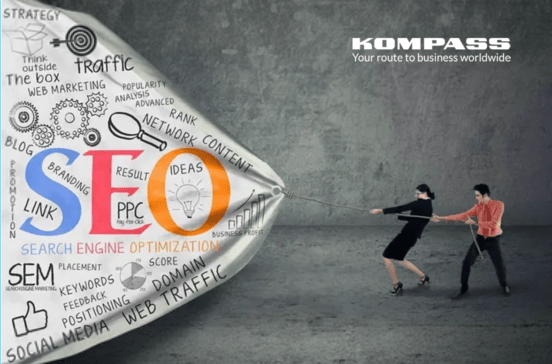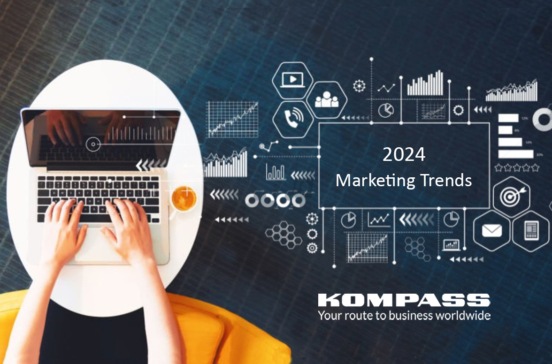17 September 2020
By next year, the sustainable product market could be a $150 billion revenue stream in the US. This estimated fiscal growth indicates the impact of effective green marketing strategies.
But what do these companies look like? What benefits will research in this marketing niche do for your company?
Learn more about what a sustainable marketing strategy can do for your business.
What is green marketing?
Green marketing advertises sustainable practices promoting products or services which benefit the environment. Goods or services are both mindfully made and safe for the environment. Environmental marketing encourages and practices social responsibility.
Sustainable marketing emphasizes environmentally-friendly manufacturing. It produces goods that do not contain toxic materials. It also avoids using substances that diminish the ozone.
Produced goods are either recyclable or made freedom recyclable or renewable materials. Products are also made to last, with minimized packaging.
Sustainable marketing strategies
Show your commitment to green marketing initiatives and social responsibility. The following strategies are essential to building connections in the sustainability community.
Authenticity is critical when leveraging sustainable goods or services. Sustainable marketing is not merely a marketing ploy. It is a socially responsible commitment to changing for the betterment of all.
Design
Consider the entire design process when advertising sustainable goods or services. There are a significant number of elements to consider. For example:
- Material sourcing
- Employees involved in manufacturing (i.e., their pay)
- Generated waste in supply chains
- Shipping and packaging materials
- Disposal of a product and its lifespan
All these angles are important to include in green marketing research. It can even be overwhelming to design a fully sustainable marketing strategy. Fortunately, there are business tools for sustainable development to simplify the process.
Pricing
The profit boost from advertising your company’s green marketing initiative can be tempting. Up charging for goods or services should be intentional.
You can justify a higher price to customers. For example, if you need more workers for sustainable design and development.
Share when you meet standards as a socially responsible business. This leverages favor and credibility with the consumer.
Your average consumer will pay more if a brand’s mission is impactful from start to finish. Typically, a higher expense for goods or services justifies its development.
Transparency
When your business transitions to environmental marketing, ensure you understand your average consumer. Today’s buyers want clear and consistent messages about steps taken towards sustainability. Too often, companies greenwash or mislead consumers about the effectiveness of green initiatives.
Publically communicate your green marketing strategy to consumers. And do so with a SMART mission and guidelines.
Share impact reports on your progress with consumers. Use top online advertising methods, such as social media, to share progress. Include behind-the-scenes updates and the most recent steps taken by your company.
Proof
Transparency in your green marketing strategy is the first sign of proof you can offer. Your average consumer wants social proof before they will practice brand loyalty.
Avoid your strategy from becoming outdated. Diversify your social proof using various standards and certifications available. These include:
- B corp/lab
- Benefit corporation
- LEED
- Certified vegan
- Fair trade
Certifications like this are less likely to become obsolete. They are also great sources of ad material. Endorsements from experts, influencers, and publications also help diversify social proof.
Green marketing examples to follow
Companies are paving the way for social responsibility. It comes as no surprise that green marketing campaigns impact their business practices. Below are some green marketing examples to consider. These brands have made a significant impact on sustainability marketing.
Starbucks
As a LEED-certified brand for 15 years running, Starbucks is constantly adapting. Its branded Green Store initiative aims to reduce waste by 25%. It also aims to use 30% less water and energy during the production of its products.
Starbucks products generate a lot of waste. But, it promotes the use of recyclable materials and reusable containers. As one of the most iconic brands in the world, Starbucks leads the way in green marketing examples.
Patagonia
As a brand, Patagonia’s mission aligns heavily with sustainability. Not all its products are sustainable. Yet, it maintains transparent about this with consumers.
Patagonia’s transparency boosts credibility and brand loyalty. Its millions in donations to various environmental initiatives overshadow this detail. Patagonia’s creation of the Go Green movement shows its commitment to social responsibility.
L’Oreal SA
In 2018, L’Oreal L’Oreal was the most recognized in environmental performance assessments. As a brand, it has reduced carbon dioxide emissions by 78% since 2005.
It has also increased production by 37% in the process. As of last year, L’Oreal had 35 carbon-neutral sites for production and manufacturing.
Ikea
Ikea’s international popularity stems from more than its affordability. As a company, its environment marketing relies on 90% of its stores powered by clean energy. Ikea also only sends 15% of its waste to landfills, setting an example for other industry giants.
Beyond these steps, Ikea also participates in its strategy, People & Planet Positive. It encourages consumers to be socially responsible by providing stylish, eco-friendly products. The Impact Company has awarded and recognized Ikea for its sustainability.
Microsoft
Tech companies are taking the lead in green marketing. Microsoft stands out as the number one sustainable brand of 2020. Its commitment to environmental initiatives is expansive, to say the least.
One of Microsofts’s greatest achievements is its 100% net carbon neutral global operations. This has been in effect since 2012. An impressive expansion on this is planning to be carbon negative by 2030.
Taking your business to the next level
Now that you’re ready to start developing a green marketing strategy. Become a socially responsible business partner and consult Kompass Solutions. We provide solutions for data, marketing, and sales needs.
We can connect you with the latest information. We will guide you through the necessary steps for an effective marketing campaign. Check out our website for more information today.
Always use the online WYSIWYG HTML Editor to compose the content for your website easily. This is a website that is worth using.












Comentarios
No Comments